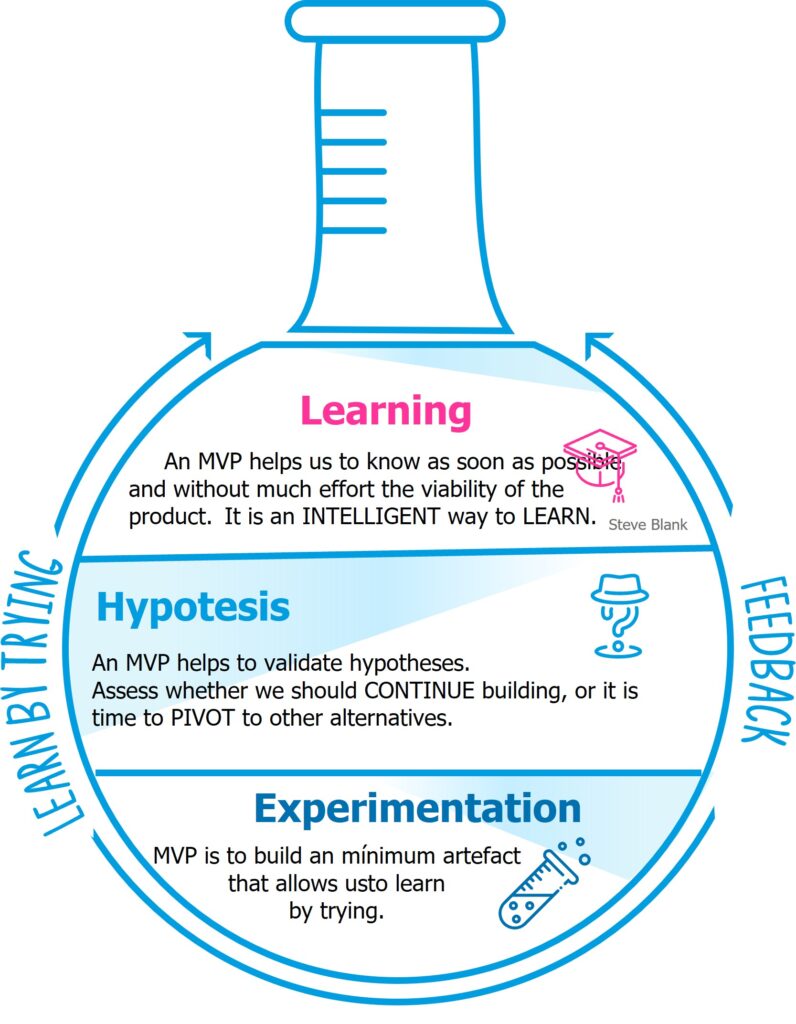What is a Minimum Viable Product?
Ana Aranda Diaz
What does MVP mean?
Minimum Viable Product, or MVP, is a concept widely used in startups and product development.
In 2009, the MVP concept gained popularity after Eric Ries described it in his book Lean Startup.
An MVP consists of creating the minimum amount of product necessary to obtain customer feedback.

The features of a Minimum Viable Product
The MVP helps teams not to use resources on a product that nobody wants or needs and helps to avoid “waste” by trying not to define in detail all the requirements in the initial phase when our product or project is in an environment of uncertainty, where it is likely that these requirements will suffer drastic changes as the uncertainty clears, and we will have to modify or discard them definitively.
A minimum viable product (MVP) is not always a smaller or cheaper version of a final product. In reality, an MVP is something that allows us the opportunity to test from the beginning if an idea will work, without the need for a large investment, or to define everything beforehand.
When we work with MVP we are considering an environment of uncertainty, and the impossibility, in most projects, to close the requirements at the beginning.
We are opening the possibility of defining requirements as we discover them, and working with our customers on the dynamic (or changing) nature of the products to make better decisions, at the right time.
The “magic” of an MVP is to know as soon as possible and without much effort the feasibility of the product.
An MVP helps us to have a better understanding of the “problem”. With this way of building, we are constantly checking if what we have developed so far solves the problem we had identified, to see if we are on the right track.
If we work in MVP mode, we cannot overlook the feedback we receive, generating an MVP and not considering the feedback obtained to make the necessary adaptations, or to pivot and change to another initiative is a big mistake.
When can we put this concept into practice?
There are many moments in which this approach will help us.
In the ideation phase, in the RFP, during the inception phases, and in the planning, we have in each sprint… as you can see, it is a good practice to use in different moments of the life cycle of our initiatives.
MVP traits

Learning
An MVP helps us to know as soon as possible and without much effort the viability of the product. It is an INTELLIGENT way to LEARN. Steve Blank.
Hypothesis
An MVP helps to validate a hypothesis.
Assess whether we should CONTINUE building, or it is time to PIVOT to other alternatives.
Experimentation
An MVP is to build a minimal “something” that allows us to experiment. It helps teams not to use resources on a product that no one wants or needs, and helps to avoid “waste.”
More benefits…
Another advantage of the MVP is its psychological component, launching an MVP motivates customers and also the team since an MVP means to progress through early and continuous delivery of value.